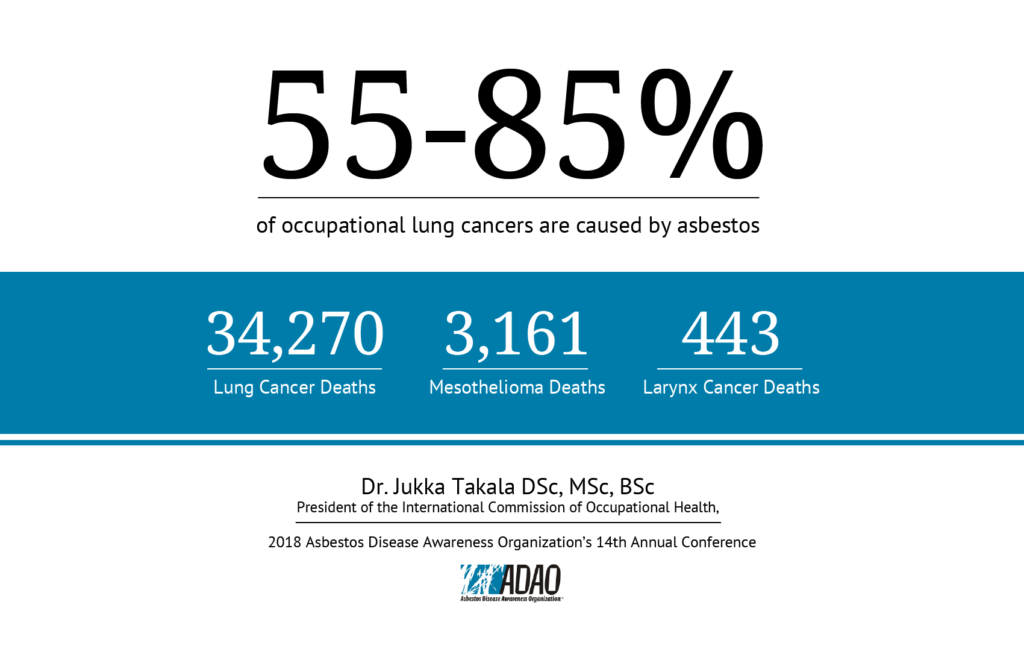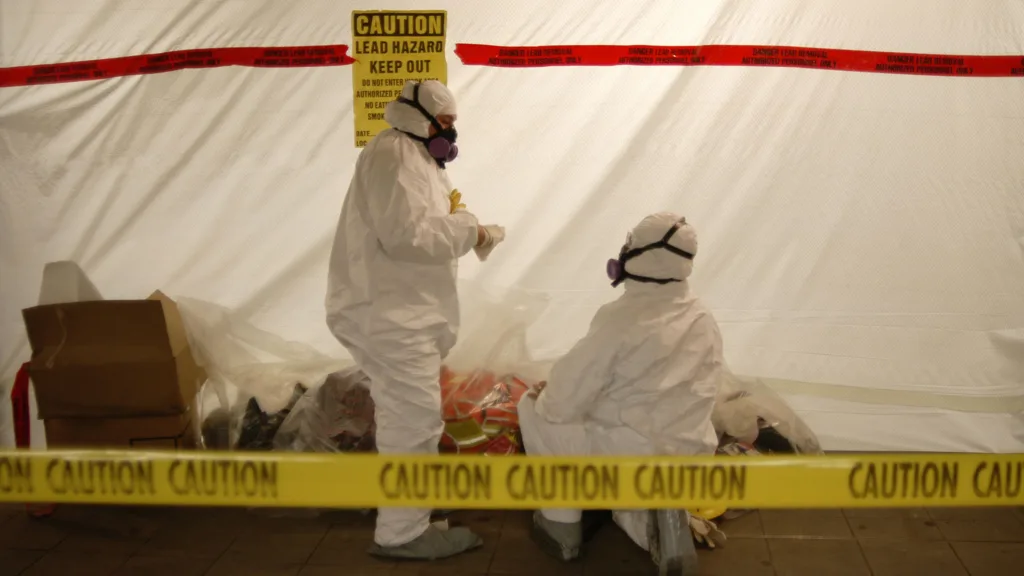Asbestos, a naturally occurring mineral, was first identified in a Greek quarry 4,500 years ago. Initially celebrated for its remarkable fire-resistant qualities and durability, asbestos was hailed as a “miracle mineral,” finding diverse applications in everything from construction materials to textiles. However, over time, extensive research unveiled the serious health risks associated with asbestos exposure, revealing its potential to cause severe respiratory illnesses, including mesothelioma, lung cancer, and asbestosis. Today, what was once considered a versatile resource is a significant environmental and public health hazard, leading to strict regulations and a final ban on chrysotile asbestos by the EPA.
Asbestos is a tiny mineral fiber that occurs in rock and soil. It consists of flexible fibers resistant to heat, electricity, and corrosion. These properties have led to its use in commercial products such as insulation, fireproofing materials, brakes, pipes, flooring, roofing, and many other construction materials.
Exposure occurs when the asbestos-containing products are disturbed, releasing the tiny fibers into the air. When breathed in, they get trapped in the lungs and slowly accumulate, causing tissue inflammation and scarring. Extreme cases lead to mesothelioma, asbestosis, or lung cancer. Other exposure methods include working with naturally occurring deposits, directly handling fibers without proper safety equipment, and secondhand exposure when family members interact with contaminated clothing or tools.
Certain trades were exposed to higher levels of asbestos than others, primarily due to the nature of their work and the materials they regularly handled. Construction, shipbuilding, and manufacturing industries often used asbestos-containing products for insulation, fireproofing, and durability. Workers in these trades, including insulators, pipefitters, boilermakers, sheet metal workers, carpenters, bricklayers, laborers, and shipyard workers, frequently encountered asbestos dust and fibers during their daily tasks.
The risk was especially pronounced in older buildings and infrastructure where asbestos was commonly used. Additionally, maintenance, demolition, and renovation activities often disturbed these materials, further exposing workers to harmful levels of asbestos. As a result, many individuals in these trades developed asbestos-related diseases, such as mesothelioma, lung cancer, and asbestosis, highlighting the crucial importance of safety measures and regulations to protect workers in high-risk environments. Awareness and education about the dangers of asbestos exposure have become vital components in promoting worker safety in these industries.
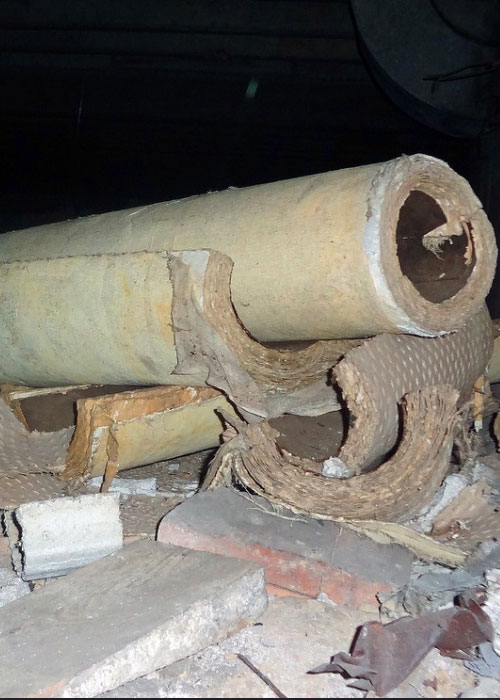
Insulators
Insulators are a vital segment of the unions that VL serves. They are indispensable in the intricate processes of building construction and maintenance. With a deft hand and keen expertise, they expertly manage installing, replacing, and removing various insulating materials. Their meticulous work is crucial in regulating indoor temperatures, creating a comfortable and welcoming atmosphere while boosting energy efficiency. Their dedication significantly elevates buildings’ overall performance and sustainability, ensuring they stand resilient against the elements.
However, a significant concern arises from the fact that many materials historically used on insulator worksites have been found to contain asbestos. Asbestos exposure is linked to serious health issues, including mesothelioma as well as lung cancer and other respiratory diseases.
Common materials on job sites that have historically contained asbestos include insulation products, valves, gaskets, and various adhesives manufactured before the 1990s. In addition to these items, other building components such as cement, joint compounds, and drywall may also pose risks. The presence of these hazardous materials highlights the importance of adhering to safety regulations and implementing proper handling procedures to protect workers’ health on insulation projects.
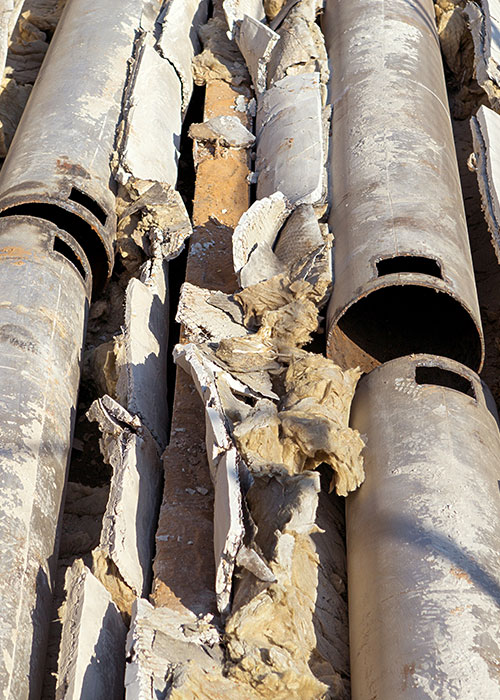
Pipefitters
Pipefitters are essential to the comfort and functionality of our modern homes and workplaces. They meticulously install and repair intricate piping systems that channel water, gas, and other vital fluids, helping to create a seamless flow in our daily lives. However, despite the critical nature of their role, these skilled professionals faced grave health hazards from asbestos exposure, a hidden danger that looms in the shadows.
Asbestos was commonly used in various construction materials before the 1990s, and many pipefitters may encounter it in their daily tasks. The primary sources of asbestos exposure include flooring and ceiling tiles, drywall, and insulation materials. When cut, disturbed, or damaged, these materials can release asbestos fibers into the air.
Inhalation of these fibers can lead to severe health problems, including lung diseases, asbestosis, and even mesothelioma, a type of cancer associated with asbestos exposure. Due to the age of numerous buildings and infrastructure, pipefitters are at a considerable risk of exposure, and many experience health repercussions.
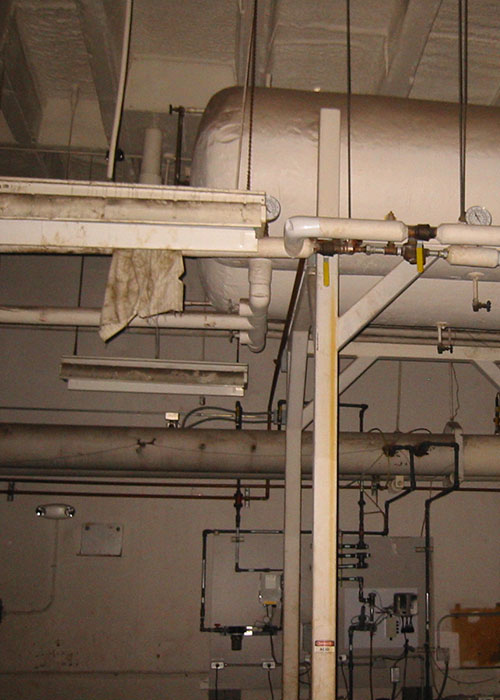
Boilermakers
Boilermakers are among the trades most often exposed to asbestos, a hazardous material that poses serious health risks. This exposure primarily arises from various products and materials used in their work, including insulation, adhesives, additives, gaskets, and cement produced before the 1990s. Other sources of asbestos exposure include outer wraps, liners, joint compounds, and sealants commonly used in various applications.
Boilermakers play a vital role in constructing and maintaining the world around us. These skilled tradespeople assemble, install, and repair heavy metal structures and machinery. They work on projects that include commercial buildings, industrial facilities, ships, and vehicles, ensuring that these structures are safe, functional, and durable.
Boilermakers maintain the world around us, working on heavy metal structures and machines, including commercial buildings, ships, and vehicles. They are experts in their field as they operate welding equipment and repair and fabricate metal for manufacturing companies, shipyards, railway companies, and chemical plants. While boilermakers risked life and limb, many of the materials present at worksites were manufactured with asbestos, exposing them to the risk of mesothelioma and lung cancer.
No profession was more exposed to asbestos than boilermakers. The danger was predominantly present in insulation, adhesive, additives, gaskets, and cement created before the 1990s, which contain asbestos that breaks down with time and becomes airborne when disturbed. Outer wraps, liners, joint compounds, sealants, and pipes are a few other products on worksites that have historically contained asbestos and can release dangerous fibers into the air.
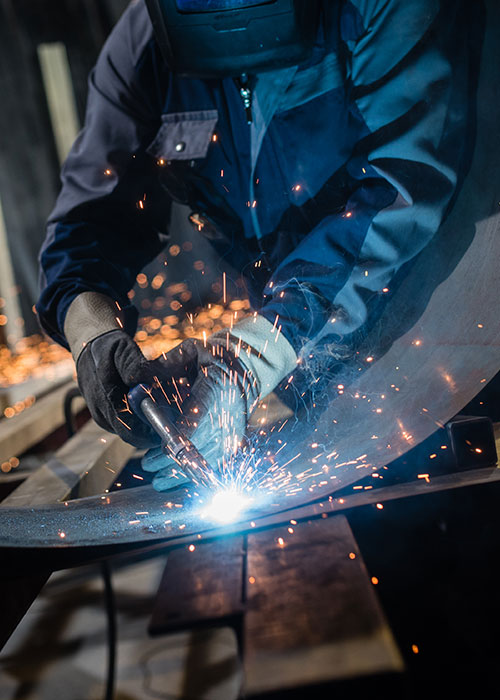
Sheetmetal Workers
Sheet metal workers play an essential role in the construction and maintenance of buildings, contributing to the safety and functionality of these structures for the enjoyment of occupants and users. They specialize in manipulating thin sheets of metal, which they shape and assemble to create a diverse range of products. Some of these products include complex ductwork systems for heating and ventilation, durable roofing materials that protect against the elements, and aesthetically pleasing siding that enhances the building’s exterior. They also produce various other crucial components integral to residential and commercial buildings.
Their responsibilities extend beyond mere fabrication; they are also tasked with installing these metal items in various locations throughout the structure. This involves an in-depth understanding of architectural plans and adhering to stringent design and safety standards. Given the complexity of their work, attention to detail is of utmost importance. Even small mistakes—such as miscalculations in measurements or improper alignment—can lead to significant problems that may compromise the integrity of the construction. Therefore, sheet metal workers must possess a high level of skill and craftsmanship to ensure that their projects meet all necessary specifications and contribute to the overall success of the construction process.
However, the job comes with potential hazards, particularly related to specific materials commonly used in the industry. For instance, sheet metal workers may encounter risks associated with steel panels and core coatings. Additionally, older materials, such as asbestos felt coatings and fireproofing substances manufactured before the 1990s, pose health risks due to their toxic properties. Other materials that can be hazardous include pipe insulation, gaskets, joint compounds, and cement. Awareness and proper safety protocols are essential for sheet metal workers to mitigate these dangers and protect their health while performing their duties.
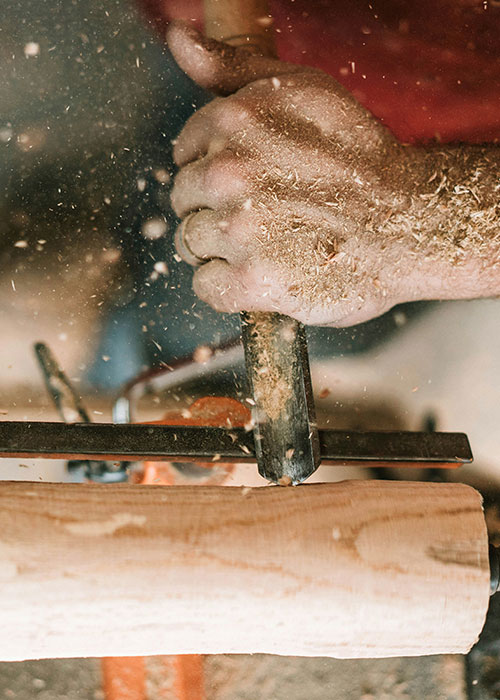
Carpenters
Carpenters are essential to our communities as they remodel and renovate both commercial properties and residential homes, ensuring these structures remain sturdy and aesthetically pleasing. However, as our aging communities require more attention, carpenters face increasing risks due to exposure to old asbestos-containing materials. This exposure raises their likelihood of developing mesothelioma and lung cancer.
The danger for carpenters is particularly prominent with drywall, insulation, floor and ceiling tiles, lumber, and joint compound manufactured before the 1990s. These products often contain asbestos, which can break down over time and become airborne when disturbed.
In addition, adhesives, putty, mastics, paint, and siding are other materials used on worksites that have historically contained asbestos, posing further risks by releasing harmful fibers into the air.
Asbestos is known for being lightweight and heat-resistant, but its presence comes at the expense of the health of hardworking individuals. If someone inhaled asbestos 30 years ago, those fibers may still be lodged in their lungs today.
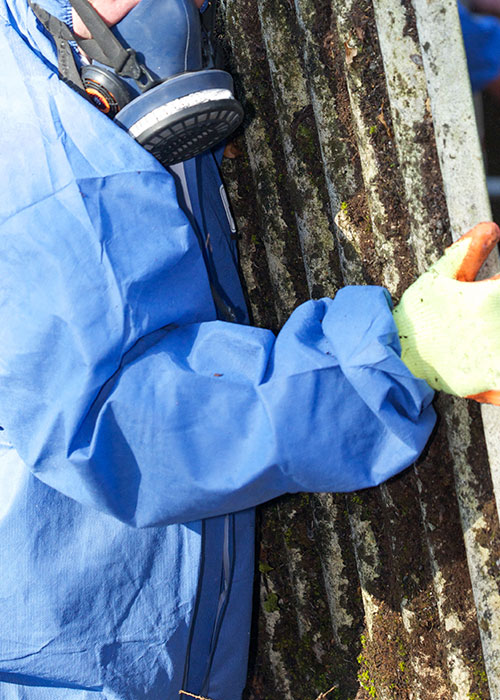
Roofers
Roofers are a vital component of the building industry, responsible for installing, repairing, and maintaining roofs that protect us from the elements. Their work ensures that we have secure, weatherproof, and environmentally sustainable structures to live and work in.
In their daily tasks, roofers frequently encounter a range of materials that may contain asbestos, a hazardous substance linked to serious health risks. These materials can include:
- Shingles: Older types of asphalt or fiber cement shingles used in roofing systems before the 1990s may include asbestos fibers.
- Roofing Felt: This underlayment, often used for waterproofing roofs, may contain asbestos in some older products.
- Tiles: Certain roofing tiles, especially those manufactured before regulations changed, can contain asbestos.
- Cement Guttering: This is often found in older buildings, and gutter systems made with asbestos-containing cement can pose a risk.
- Drain Traps: Older plumbing systems may have drain traps that contain asbestos.
- Drywall and Joint Compound: Many construction materials, including certain types of drywall and joint compounds used before stricter regulations, can contain asbestos.
- Insulation: Some insulation materials used in attics and walls may also contain asbestos, particularly in homes built before the 1990s.
Given the potential health risks associated with asbestos exposure, roofers must be aware of these materials and take appropriate safety precautions. Proper training, protective gear, and adherence to regulations are essential to safeguard the workers and the occupants of the buildings they service.
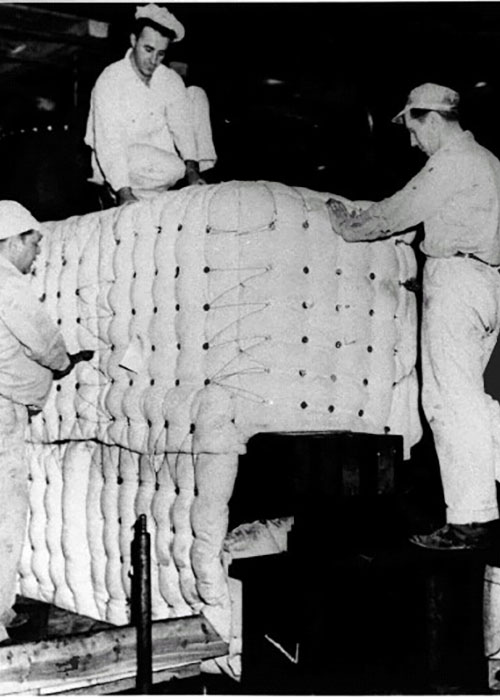
Laborers
The diligent work of laborers paved the way for creating new, safe, and innovative structures in Chicago, the surrounding areas, and the entire nation.
Unfortunately, many of the materials that remain present on demolition worksites today were manufactured with asbestos, exposing tradesmen and women to the risk of mesothelioma and lung cancer.
The danger for laborers is mainly present in insulation, drywall, joint compound, and tiles installed before the 1990s, which contain asbestos that breaks down with time and becomes airborne when disturbed.
Pumps, valves, and cement are just a few other materials on laborers’ worksites that have historically contained asbestos and can release dangerous fibers into the air.
#UnionStrong
Vogelzang Law is proud to partner with unions across Chicago and the State of Illinois. We are honored to count numerous unions representing bricklayers, steelworkers, insulators, pipefitters, laborers, sprinkler fitters, carpenters, and many more as valued partners, colleagues, and friends.


